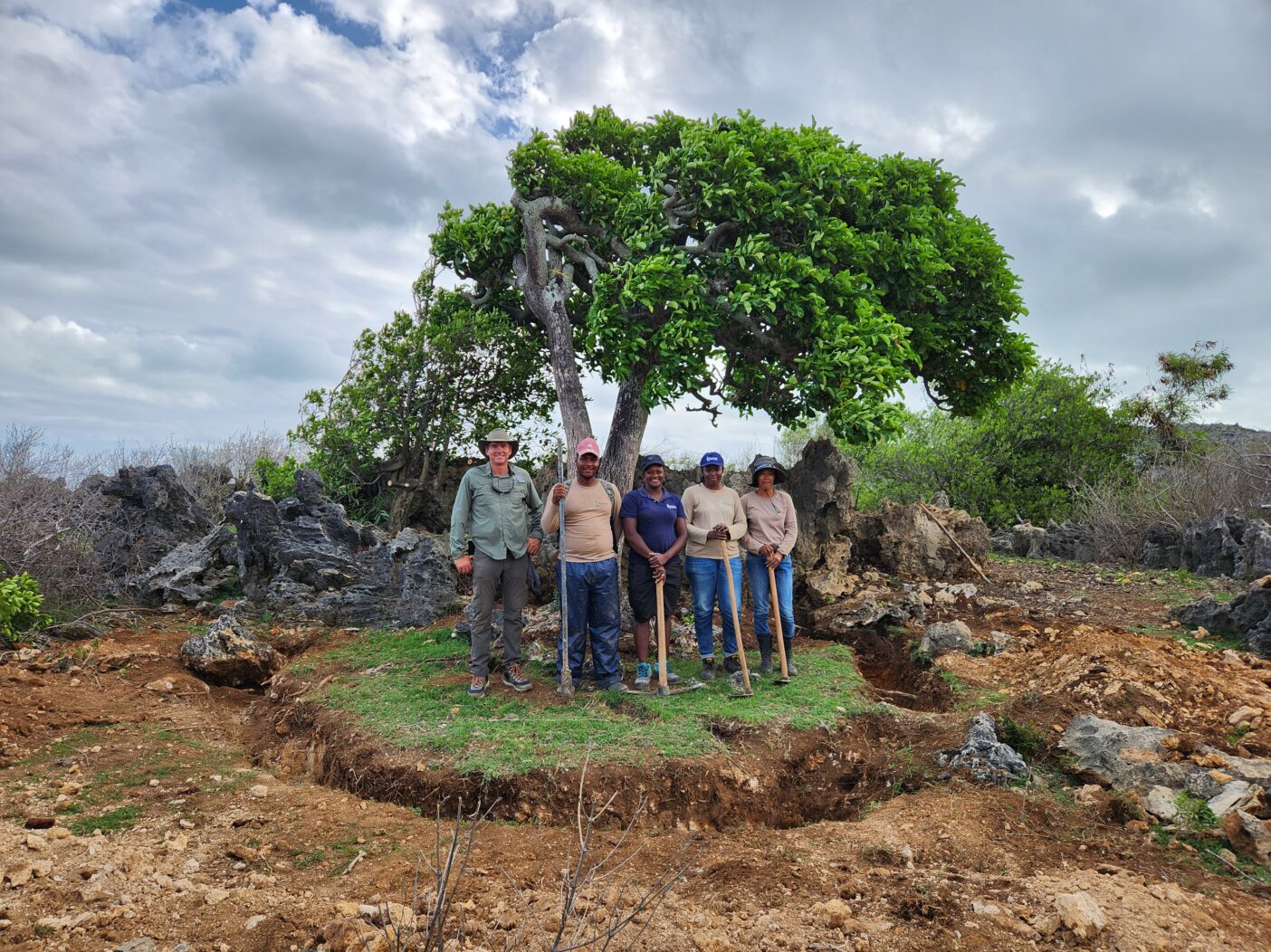
Our reputation for moving trees like furniture came from the hundreds of epic relocations or “saves,” if you will, from the early years of building our gardens. This was back in the 2000s when developers bulldozed little ranch houses to make way for big, showpiece homes. We acted as tree hunters, chasing the demolition permits and scouting for doomed trees that we could rehome. These giant rescues formed the backbone of our initial display. We were able to create immediate interest to make for a great guest experience, the shade needed for a lush tropical understory, and the essentials to keep even the most begrudged grandpa happy.
Word of our tree-moving escapades obviously got out. Colleagues at Botanic Gardens Conservation International, an organization representing botanical gardens from over 100 countries, connected us with the Mauritius Wildlife Foundation. Mauritius is an island in the Indian Ocean about 500 miles off the coast of Madagascar. Its territories include Rodrigues, a 42-square-mile volcanic island located 344 miles to its east. On this little speck are five great specimen trees in the way of a major runway expansion, needed for the sake of transporting supplies and boosting tourism. These five trees are among the few holdouts remaining in situ, or in habitat, since pre-human civilization. My colleagues at Mauritius Wildlife Foundation call them “Legacy Trees.” Their ancient genetics are critical for maintaining biodiversity on the island. Like our Naples residential saves, we hoped to salvage these priceless specimens before they went to the chipper. This effort was funded as part of a large partnership between the Mauritian Wildlife Foundation and the Rodrigues Regional Assembly.
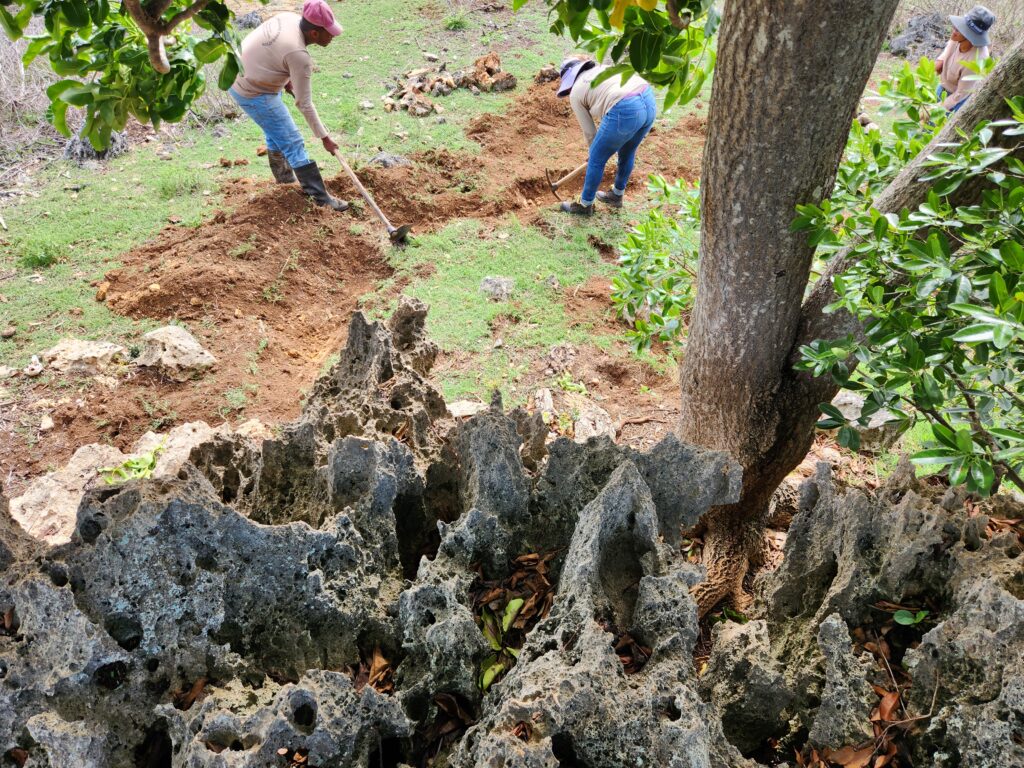
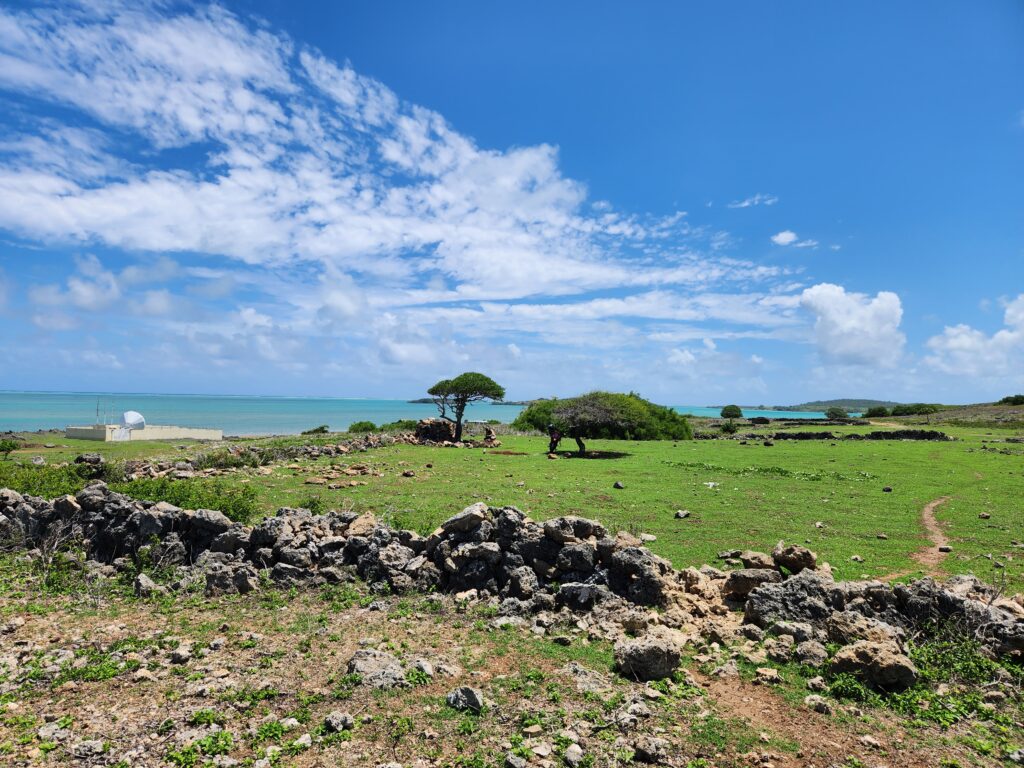
Over many Zoom calls, we hatched a plan. We would visit in March 2023, their rainy season, train a field team, and begin the complicated root pruning process. We would then transplant the prepared trees in the following year’s rainy season to a nearby nature reserve. The island’s logistical challenges would test my MacGyver skills to their limit. I packed propagation kits to back up propagules from each tree, pruners and saws for root and canopy work, and much more. My extensive travels to islands and jungles seemed amateur when considering this island with its remoteness and its many endangered species. Little remained of the pre-man ecosystem. The endemic tortoise and flightless birds were long extinct. That’s why conservationists are so eager to protect the species that remain, like these legacy trees.
After what seemed like days of air travel, I was revived by the beautiful island of Rodrigues. The small-town character with its lush tropical panorama and surrounding coral reefs was captivating. My excitement grew as I met our cheerful and competent field team and set out to see the trees.
We walked through ancient farm fields, reminiscent of Ireland with stacked stone livestock corrals, tethered or loose sheep and cattle, derelict fence remnants and condemned structures. These were once-thriving farms passed down since habitation hundreds of years ago. Now, livelihoods are in the way of the new and crucial airstrip. Our five legacy specimens were the only native species that farmers had saved to provide shade and fodder for livestock. All others were introduced exotics intended to provide the essentials required of island life. Many, unfortunately, now dominated and outcompeted these companions of extinct species, such as the tortoise.
As I approached our trees for the first time, I noted how much wilder and more daunting the habitat was in person compared to the photos I’d seen on Zoom. The trees are all located directly on the emerald coast, elfin from the environmental conditions, and wildly windswept. A moonscape of jagged shark tooth calcarenite limestone surrounds them. Loose spherical boulders are strewn everywhere. The trees are locked in soil and rock to keep grounded and nourished in the brutal habitat. This survival tactic would make root pruning very difficult. But they had to be saved for biodiversity’s sake, and any attempt was better than burying them under the monotonous concrete that would soon cover the land on which they are found.
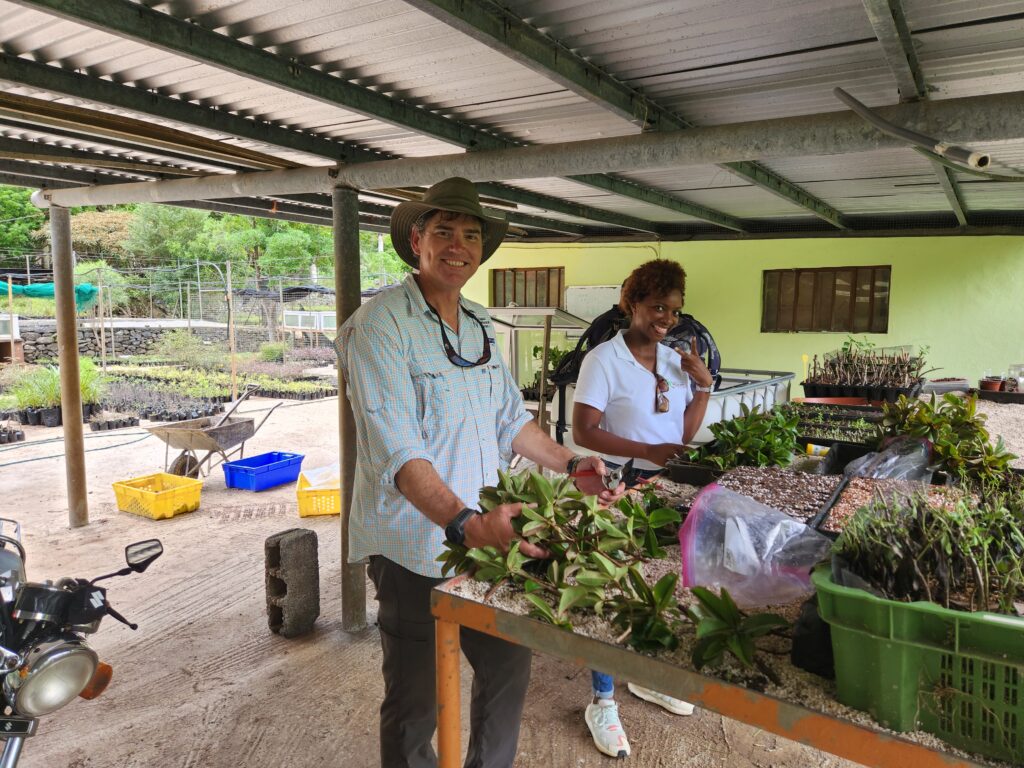
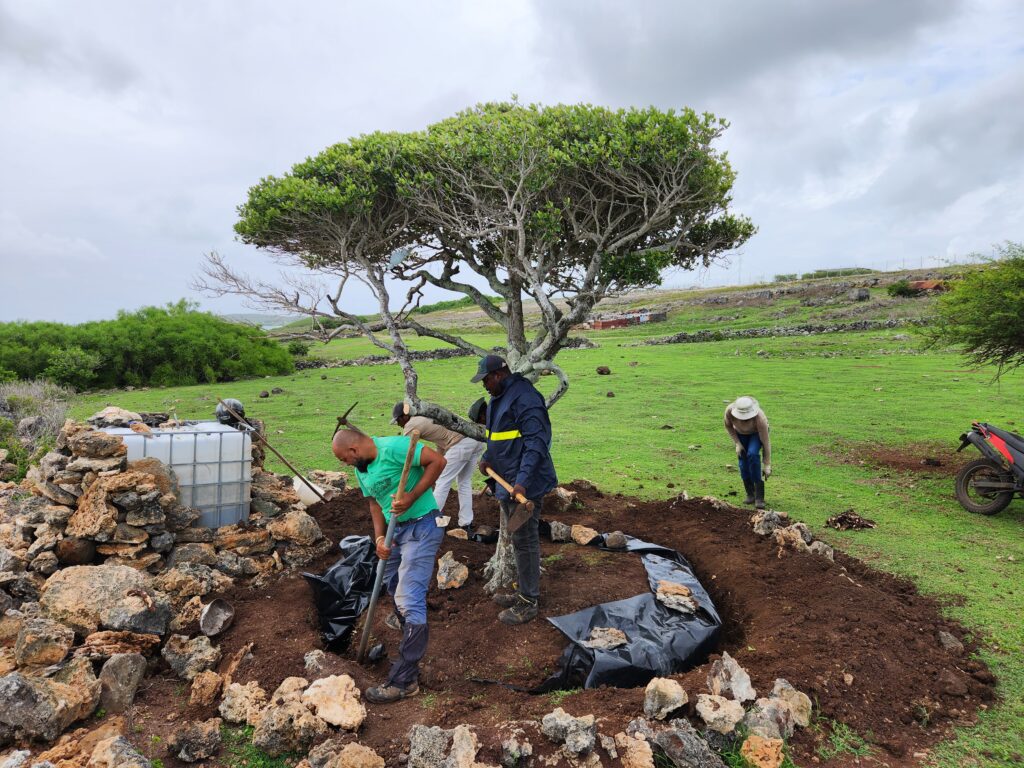
Each tree had unique challenges and would require a root pruning recipe specific to each location. Root pruning is the art of strategically cutting root systems so that trees can eventually be lifted and moved with an intact root ball. Remember I mentioned logistical challenges? With no Amazon next-day delivery, my island colleagues had creatively fabricated shovels and trenching instruments so they could perform the delicate task of exposing the roots by hand so that we did not accidentally damage them. There are no freshwater sources on Rodrigues — all the irrigation water must be desalinated and trucked to the site in makeshift tanks.
On Day One, the process started by taking cuttings for genetic backup and setting up the propagation system I had brought. Then, we began the painstaking process of root pruning. The new cuts would sprout fibrous roots, which we in turn would wall off with large, plastic tarps. Now downsized, the tree and its doughnut-like wrapped root ball can be lifted next year. We would then follow with regular watering and strategic canopy pruning and leaf stripping to reduce transpiration, or water loss through the leaves. In all, we spent a week together, working in the trenches from sunup to sundown to save these precious trees.
The team and I are back to Zoom calls, exchanging updates and discussing next steps. Things look promising. The Rodrigues team is observing root initiation, a sign that the root pruning procedure worked. This is a slow and arduous process and in a year’s time, I plan to return and help guide the tree relocation to the neighboring Anse Quitor Nature Reserve. I’m grateful to have had this opportunity to form a relationship with these trees and the islanders so dedicated to saving them. Finally, it seems, we are learning the lessons of past exploitation and ensuring that these trees don’t join the unfortunate story of the island’s extinct tortoise and flightless birds.
A painstaking process: Inside the delicate work of moving these endangered trees
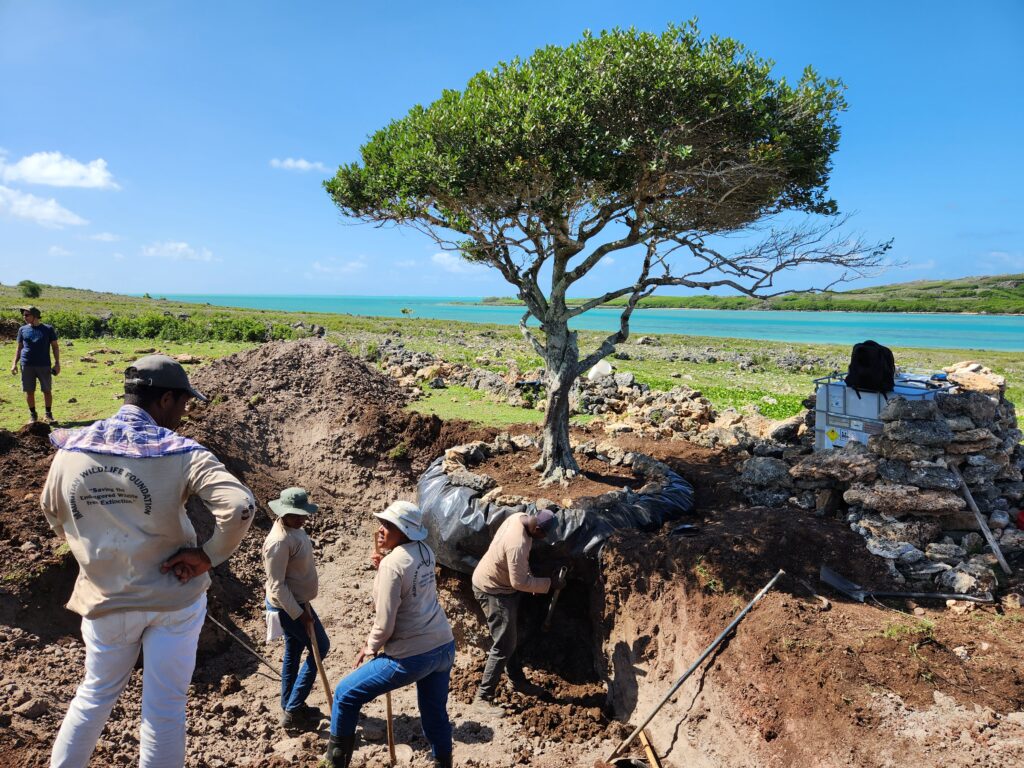
This tree is listed as Endangered under the International Union for Conservation of Nature’s Red List, which monitors plants and determines their status. It is the only one of our trees that has the characteristics of a typical neighborhood tree with a beautiful, rounded (though lopsided) canopy and a straightish trunk. It is located in an ancient pasture with deep, dark soil and free of the toothy moonscape stone in the adjacent fields.
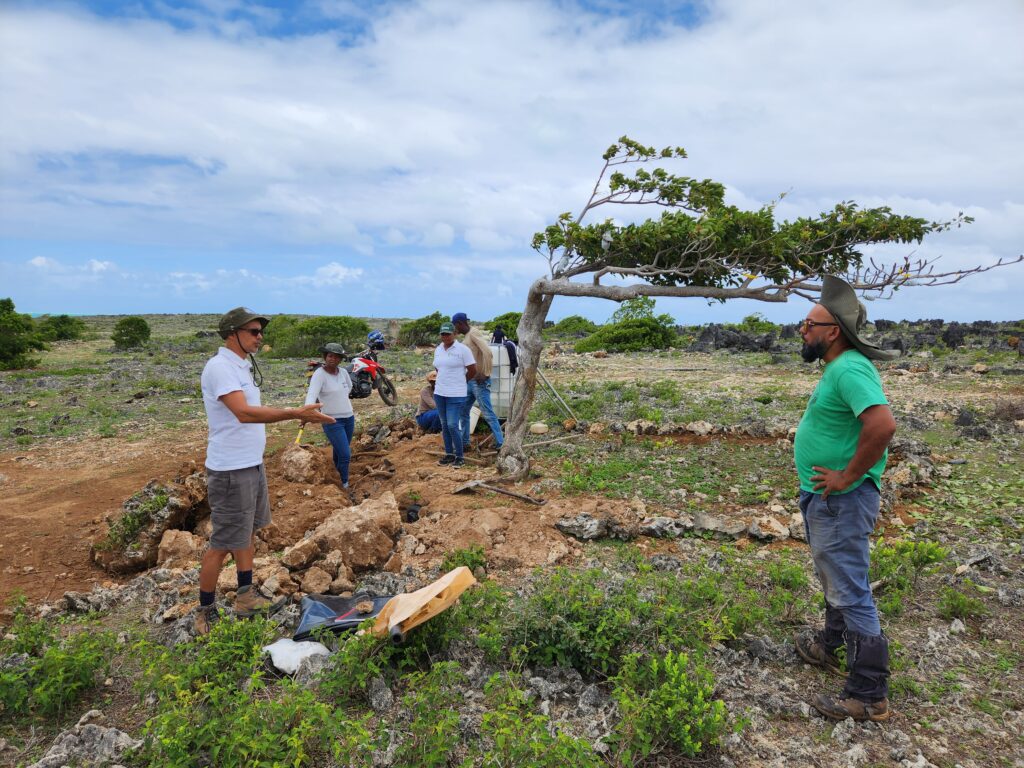
Further up the landing strip and through a maze of jagged pillars, you could see the isolated Terminalia from a mile away. It stood out like a crooked, one-sided bonsai. Finding the way through this ancient, weathered ecosystem was dangerous and extremely difficult. The razor rock varied in size from a few inches to taller than a person. The entire area was littered with caves. Not only did the tree show the ravages of nature, but it was also locked in, with a scarred trunk bulging out of a crack in thick, deteriorated calcarenite base rock. We had to break this rock apart just to root prune. How and where, and without damaging the precious cambium (the cell layer responsible for growing new bark and wood), was the challenge.
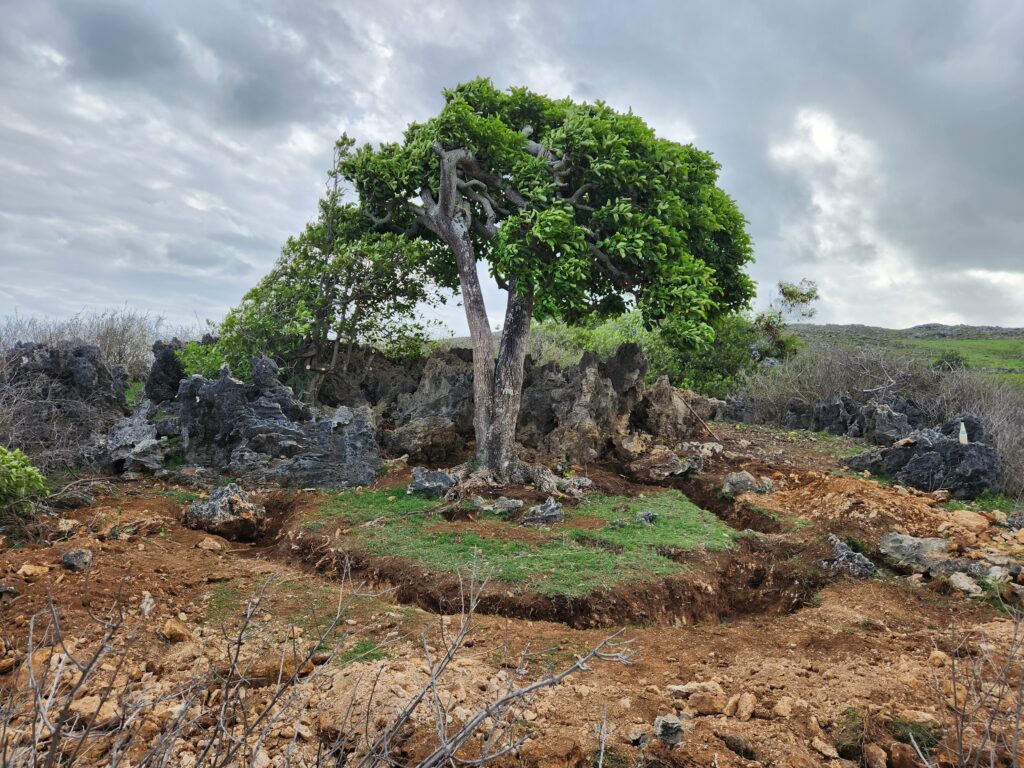
High on an adjacent farm hilltop proudly stood the impressive Polyscias — one of nine mature ones left in the wild, according to the IUCN. Its giant, lush, and shiny leaves stood out against the jagged cradle of stone that it had grown into and against over many generations. The giant tree was windswept from constant ocean exposure to its large cruciferous-like leaves. Once we painstakingly dug a trench in the accessible root zone, we found few roots. This was not good. It appeared the fist-sized roots climbed into that porous stone outcrop and hid from the hazards of island life. We needed to break the jagged and giant outcrop without damaging too many roots.
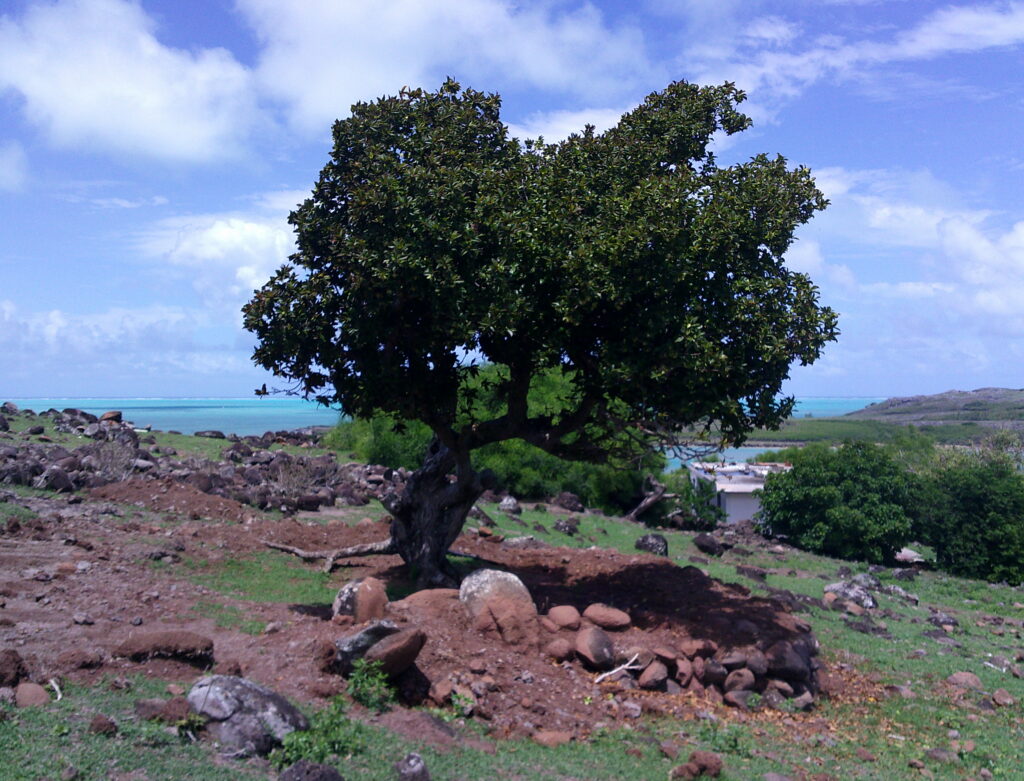
This is the one I feel best about moving, in terms of simplicity. There are two of these trees located on the side of a basalt mountain littered with beach ball- to car-sized boulders. The IUCN lists this species as Critically Endangered with just 57 mature trees known to exist in the wild. Pruning was a painstaking process that involved strategically following each shallow root, excavating them, and wrapping them with plastic.
This article originally appeared in the 2023 issue of Conserve.
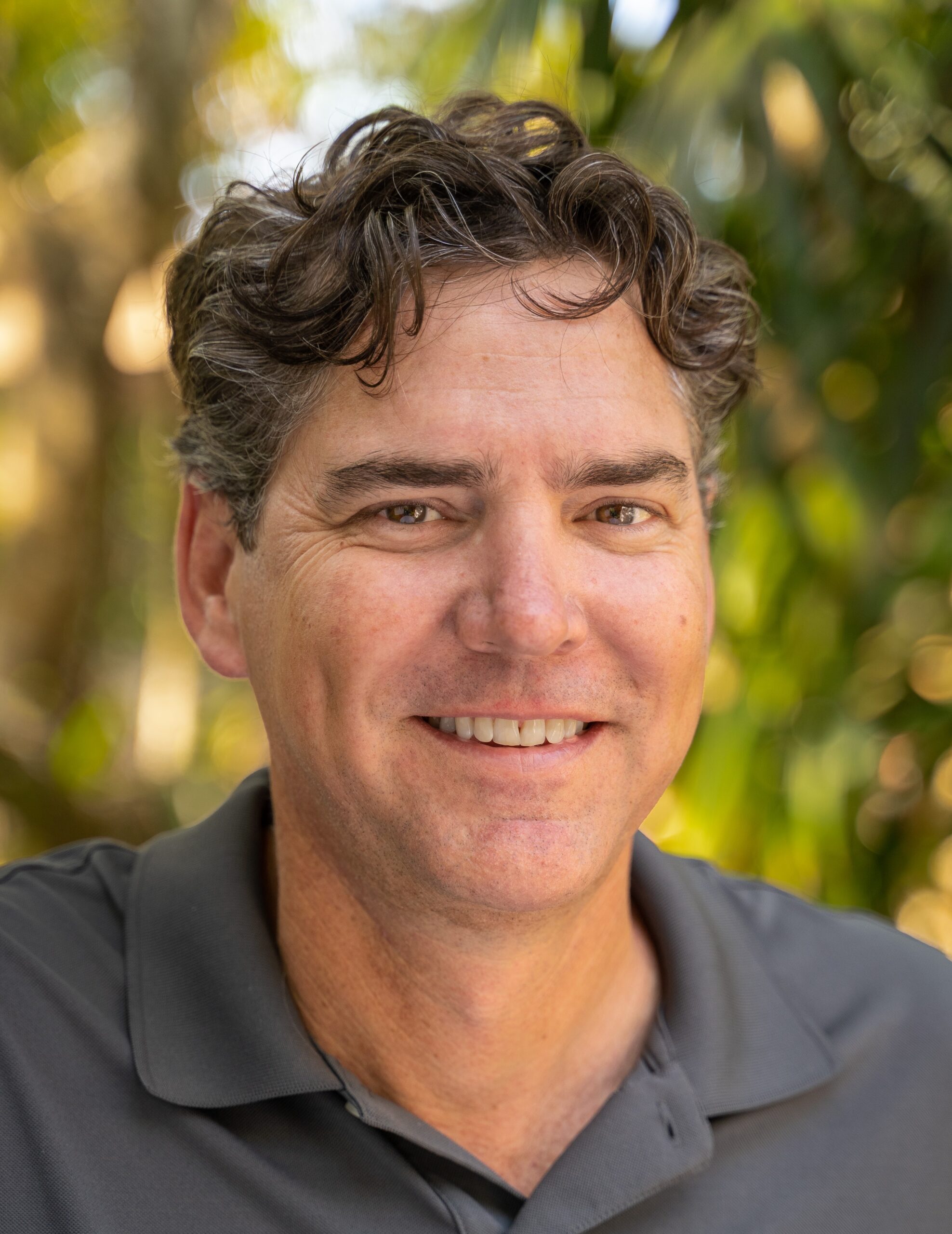
About the Author
Brian Galligan is the Garden’s Vice President of Horticulture.

